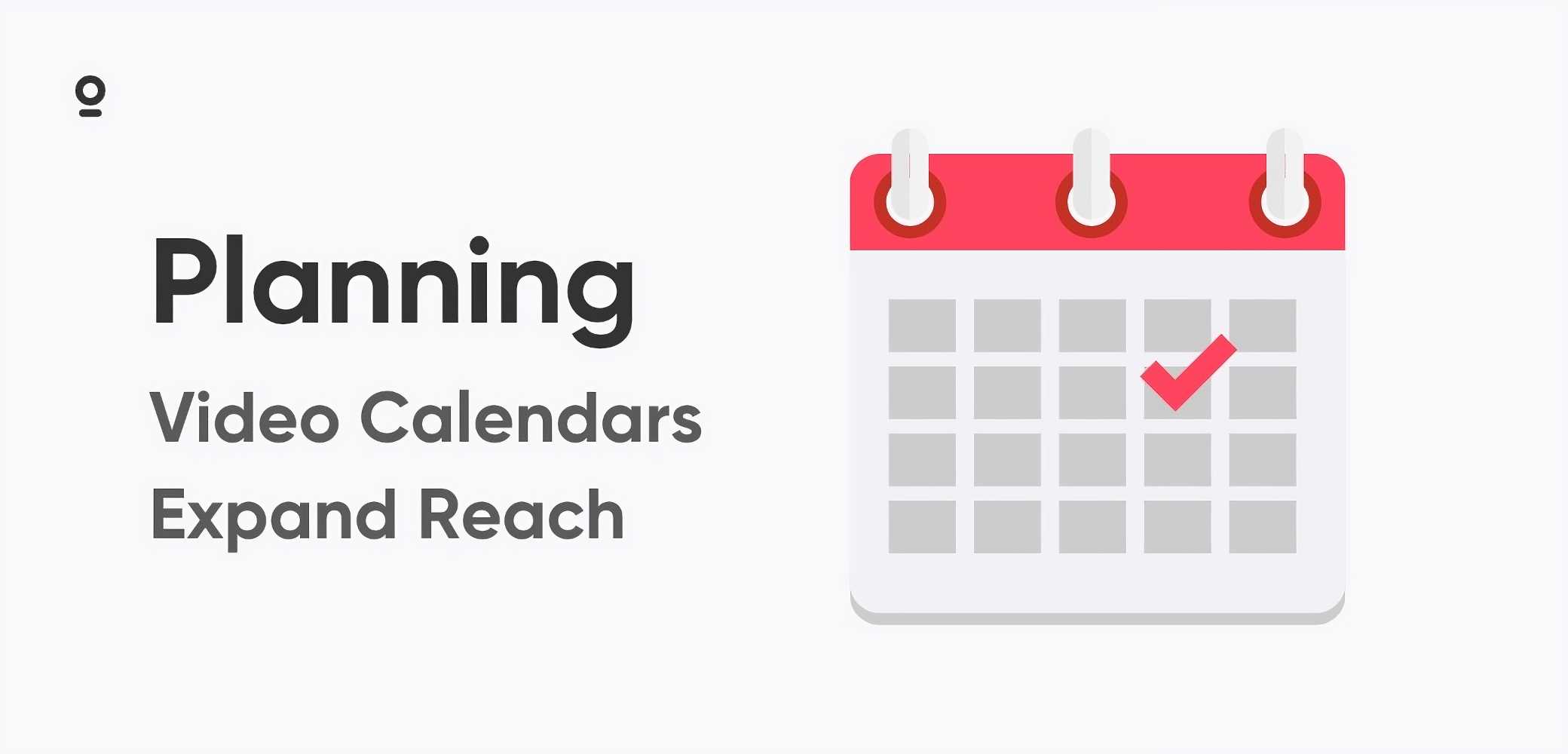Have you ever wondered why some podcasts blow up on YouTube, Instagram, or TikTok while others struggle to get noticed beyond audio apps? One key difference is often surprisingly straightforward: video content calendar creation on a regular schedule. When you rely on a blueprint instead of improvising, it's easier to think big, market effectively, and reach fresh audiences in new spaces. Below, we'll dive into why video is an incredible addition, what a solid plan looks like in practice, and how to pull it off without driving yourself crazy.
Why Video Matters for Podcasters
In our visually driven social media world, it's no shock that shows integrating video are enjoying rapid expansions in audience size. For example, YouTube remains a go-to spot for discovering long-form conversations, while short clips on Instagram Reels or TikTok can grab people who might never seek out a traditional audio show. Beyond that, adding a face to the voice—or even giving glimpses behind the scenes—helps forge a closer emotional bond than audio alone can offer.
Still, shifting into video can be daunting. You have to think about your lighting setup, camera gear, and new editing workflows. That's why a repeatable schedule, with recurring tasks and themes, makes all the difference. Instead of rushing to film something at the last minute, you'll know exactly which segments to produce, when they need to be shot, and which social media platforms to prioritize. That level of organization usually translates to more polished videos and a gradual increase in your fan base.
How a Calendar Eases the Chaos
A video content calendar acts like your trusty roadmap, guiding you away from the frantic "just record anything!" mindset that can lead to frustration. It might be a simple spreadsheet or a more advanced project management setup, but whichever route you choose, that calendar will ensure you:
Plan with purpose: Rather than shooting random clips, you'll focus on material that matches your podcast's goals and style.
- Keep it consistent: Posting on a reliable timetable helps your audience learn when and where to expect new updates, building stronger loyalty.
- Lower stress: Laying out key tasks, deadlines, and responsibilities heads off those dreaded last-minute scrambles and undercooked content.
- Measure success: When everything's laid out in one place, identifying patterns and top-performing material becomes easier. That data then shapes your future strategy.
Steps to Build Your Video Calendar
- Clarify Your Goals: Before you do anything, ask yourself why you're bringing video into the mix. Are you trying to gain more traction on YouTube? Show off your guests on LinkedIn? Invite more clicks on Instagram? That guiding purpose will drive your next steps.
- Collect Content Ideas: Every podcast episode is a potential goldmine of video snippets. Think behind-the-scenes peeks, funny outtakes, highlight reels, and sneak peeks of what's coming next. Keep all these brainstormed ideas in a central spot so you can refer to them easily.
- Plan Your Release Frequency: Decide how often you'll publish full-length videos versus short clips. Maybe you'll aim for one long episode per week on YouTube and two bite-sized teasers for TikTok or Instagram to start out. The key is consistency, not burning yourself out.
- Create a Production Workflow: Determine who handles editing, who writes captions, and who uploads videos. If you're a one-person show, schedule time blocks for each task. If you have a small team, assign each role in your shared calendar to keep everyone aligned.
- Track and Adjust: Look at your stats once a month (or at least quarterly) to see which videos resonate. If a certain platform generates lots of new engagement, lean into that. If something's flopping, switch gears and experiment.
Emphasizing Repurposing
It's impractical to produce unique material for every platform under the sun. One huge benefit of having a clear plan is knowing you can shoot once and then repurpose. You might record a full conversation, then extract funny moments, big insights, or contentious arguments to use in short promotional videos.
By focusing on video content calendar creation, you can quickly flag the clips you'll need later. While editing, bookmark the timecodes that are perfect for short teasers or behind-the-scenes posts. With forethought, you won't be sifting through hours of footage at the eleventh hour trying to find that one standout moment.
Distributing Video Content Across Platforms
Having stellar video is only half the battle; you also need a system for getting it seen by as many people as possible. A longer interview might thrive on YouTube, but you'll want to share a quick 30-second highlight in vertical format on TikTok or Instagram. Meanwhile, on LinkedIn, a more professional, informative snippet might draw in viewers who are focused on their careers.
That's where distributing video content across platforms becomes key. Keep track of recommended lengths and aspect ratios so your videos always look their best. If you can reformat your footage—horizontal, square, vertical—you'll save yourself a lot of headaches when posting across different channels. A cohesive content calendar keeps these edits manageable, rather than letting them get out of hand.
Getting an SEO Boost with Video
Video doesn't just offer extra visibility on social platforms. Popular sites like YouTube serve as powerful search engines too. With the right approach to titles, keywords, and descriptions, you can introduce your show to totally new audiences. And adding transcripts or captions can boost your discoverability for both watchers and search algorithms, especially if your subject matter is timely or unique.
It's also wise to embed or link your videos on your own site. Pair them with a summary or complete transcript, and you'll score valuable text content that search engines can index. This strategy not only lifts your search ranking but gives fans a central spot for all your content.
Leveraging Zencastr's Tools
Video production can easily become a tangled mess if you're switching between too many software platforms. A more unified environment like Zencastr helps streamline your recording, editing, and publishing. By capturing high-resolution audio and video locally, you don't have to worry about dropped quality from an iffy internet connection. There are also AI-driven tools that can eliminate "ums," minimize background noise, or spotlight the most compelling moments—perfect when you're juggling a busy schedule.
After you've recorded and edited, Zencastr offers hosting and distribution features so you're not jumping back and forth between multiple services. Combining a user-friendly platform with your trusty video content calendar keeps everyone on deadline and ensures you maintain a solid flow of engaging new clips.
Tips to Keep It Sustainable
- Batch Your Process: Record more than one episode in the same session, edit them in clusters, then schedule all your social clips at once. Setting up an efficient workflow can save you tons of time.
- Use Templates: Design your visual elements—like your intro, lower-thirds, or thumbnails—ahead of time, so you're not reinventing the wheel for each release.
- Delegate or Automate: If you have a team, divide the tasks. If you're running solo, look into software or AI solutions that can lighten your load.
- Track the Details: Note how long each step takes. If something is consistently eating away at your schedule, think about either streamlining or handing it off to someone else.
Bringing It All Together
Transitioning from an audio-only format to a show that embraces video can feel like a massive jump—especially if you don't have a solid strategy. But by using video content calendar creation as your guiding framework, you'll steer clear of those haphazard attempts that barely move the needle. A well-structured plan helps you refine your goals, define your format, and organize your uploading schedule so that every video serves a specific function.
Once you nail down how you're distributing video content across platforms, you'll start tapping into new audiences, boosting your search visibility, and letting your unique style truly shine. More than anything, you'll be ready to adapt to how people currently consume content, where quick visuals and genuine storytelling grab more attention than ever.
Whether you manage everything via a platform like Zencastr or rely on separate tools for each step, a trustworthy calendar holds it all together. Lay out your objectives, understand your audience's habits, plan a posting routine that's realistic, and stick to a system that won't burn you out. If you keep video planning front and center, it has the power to expand your podcast's reach in meaningful, lasting ways—and help it stand out in today's bustling digital world.







